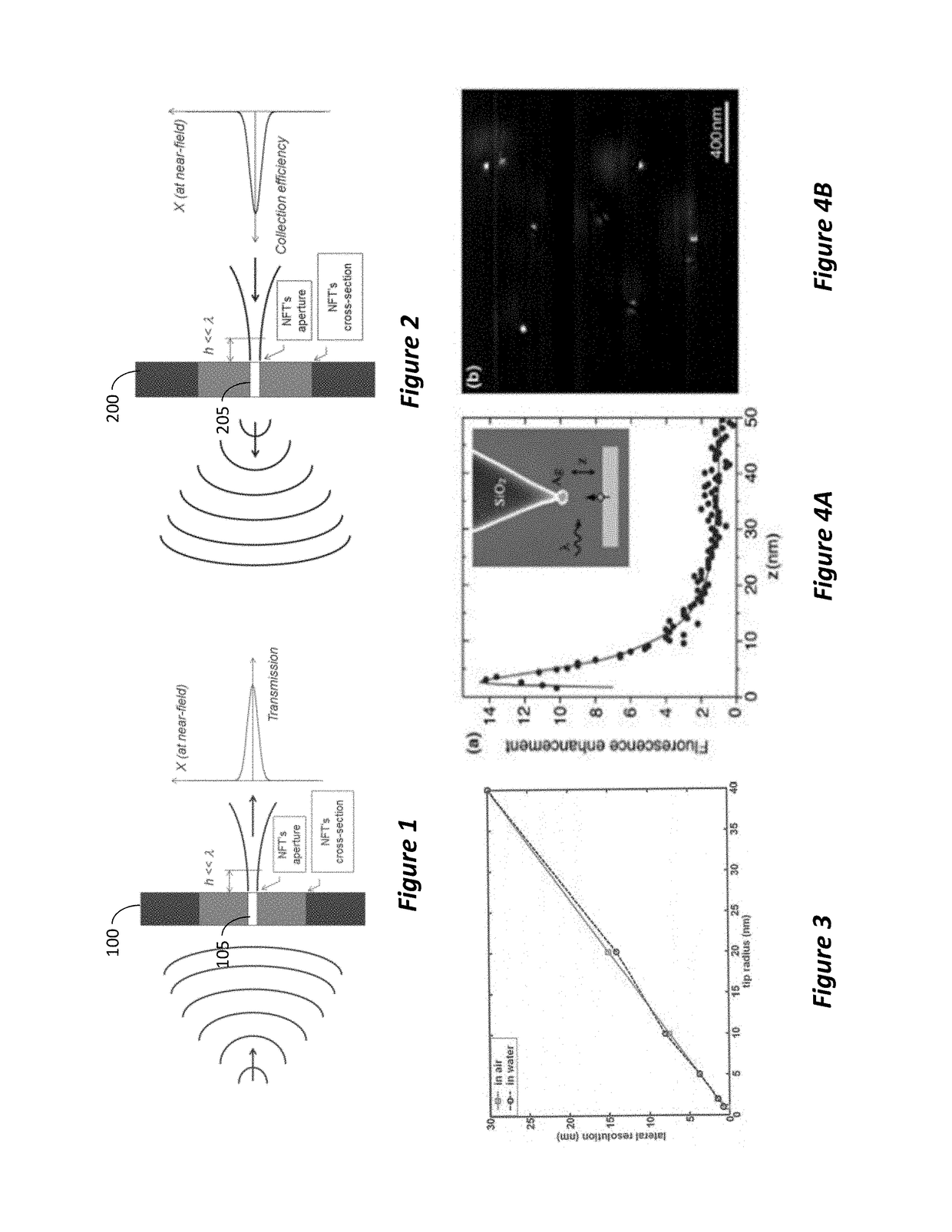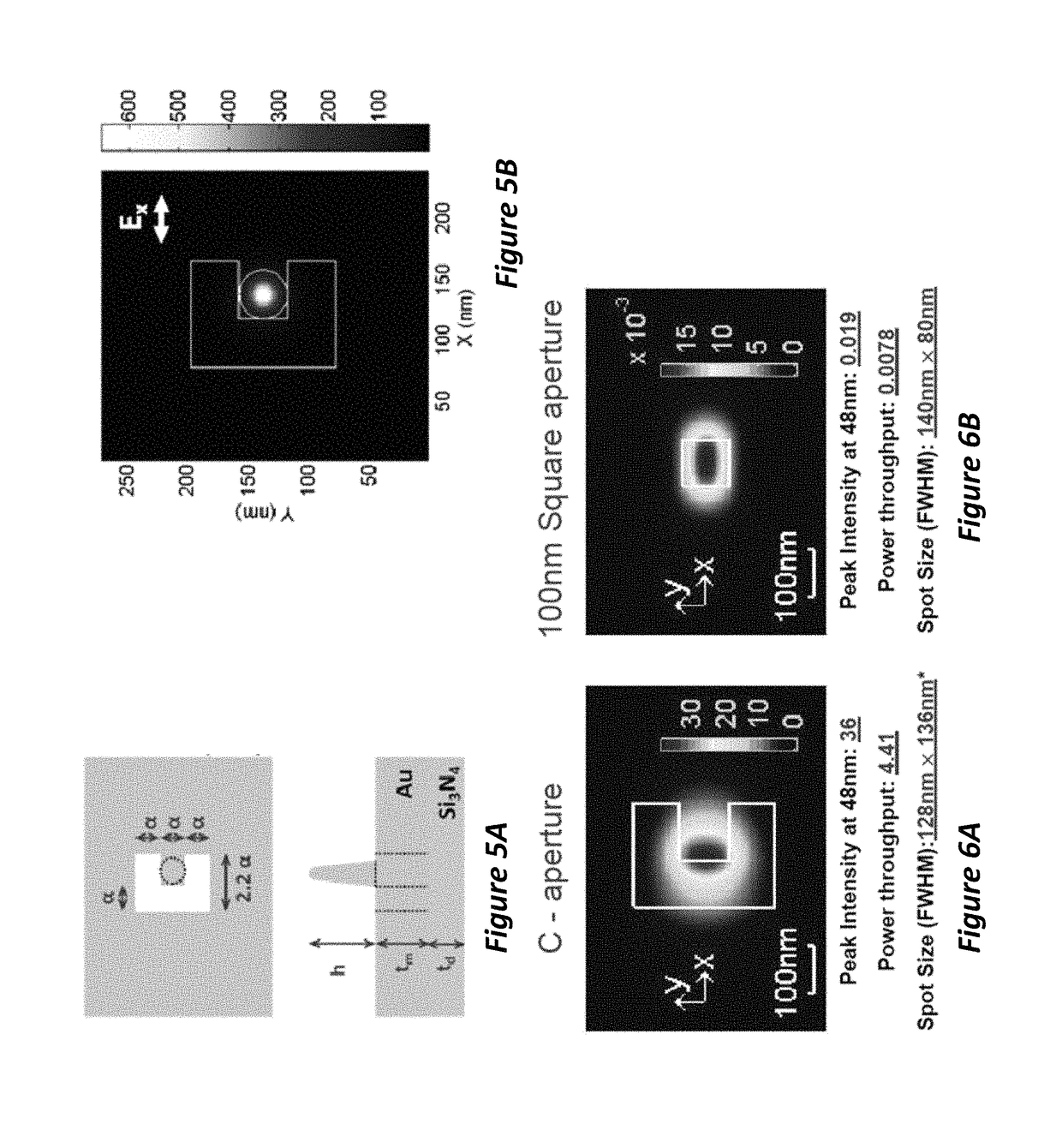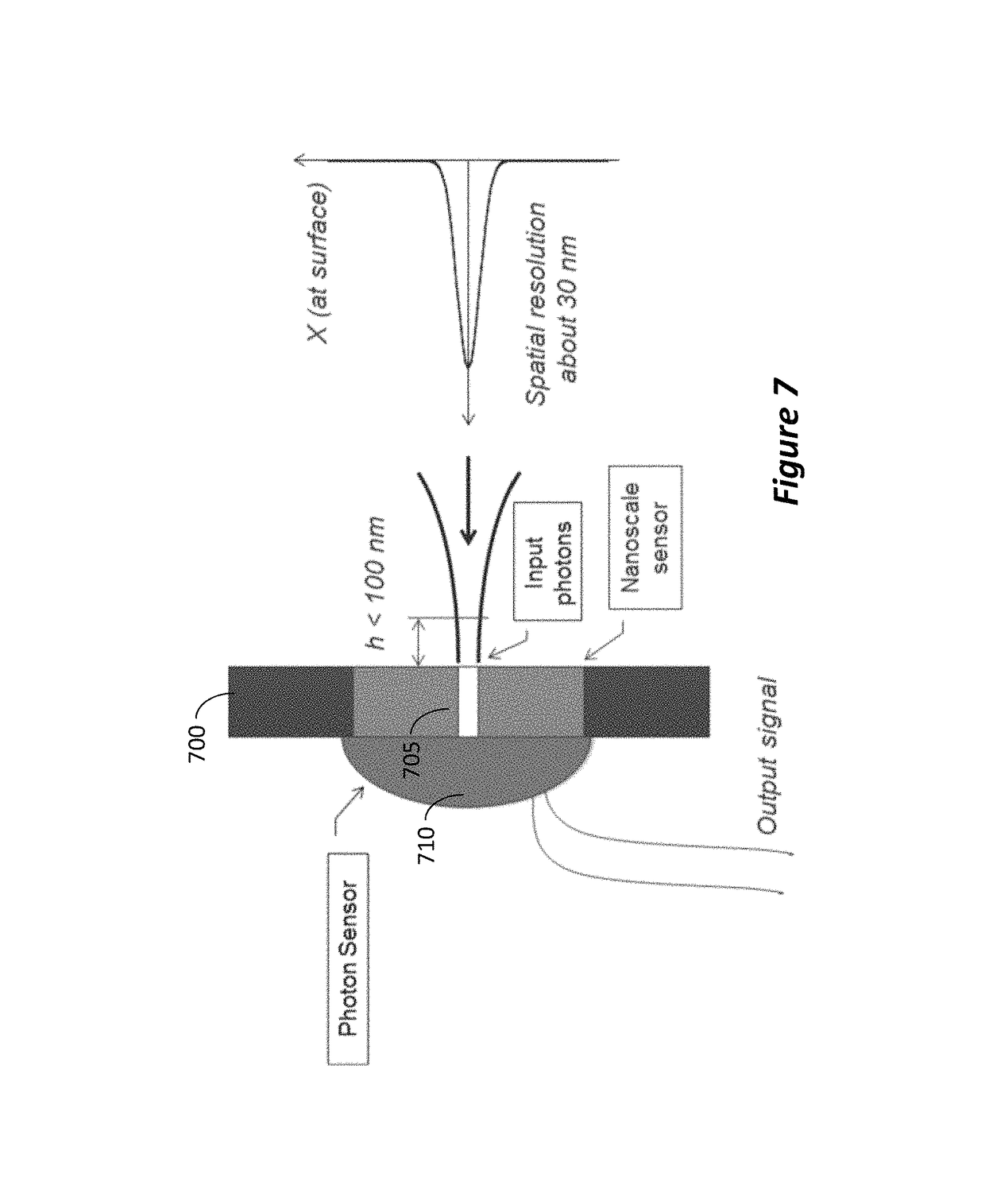Optical nanoprobing of integrated circuits
a technology of integrated circuits and optical nanoprobing, which is applied in the field of optoelectrical characterization of integrated circuits, can solve the problems of low spatial resolution, affecting the efficiency of photon collection, and running out of conventional far-field optical probing, which uses 1000-1500 nm lasers, etc., and achieves high spatial resolution.
- Summary
- Abstract
- Description
- Claims
- Application Information
AI Technical Summary
Benefits of technology
Problems solved by technology
Method used
Image
Examples
Embodiment Construction
[0041]Relatively little is known about photon collection using NFT's. FIGS. 1 and 2 present illustrations of principals of both processes: photon delivery to the sample and collection of photons emitted by the sample, as implemented in disclosed embodiments.
[0042]FIG. 1 is an illustration of sub-wavelength focusing of light using NFT. Focused or plane wave (shown on the left) diffracts on plasmonic NFT 100 with effective cross-section of a few hundreds of nanometers. Intensified light penetrates to the right semi space through NFT's aperture 105, which defines dimensions of the focused beam in the near-field, wherein the aperture diameter is much smaller than the illumination wavelength and the object to be imaged is located a subwavelength distance from the aperture (h<<λ). Coupling efficiency or transmission of tens of percent can be achieved with NFT's. Light intensity of the focused beam may significantly (more than 100×) exceed the incident light intensity.
[0043]FIG. 2 is an il...
PUM
| Property | Measurement | Unit |
|---|---|---|
| diameter | aaaaa | aaaaa |
| height | aaaaa | aaaaa |
| height | aaaaa | aaaaa |
Abstract
Description
Claims
Application Information
 Login to View More
Login to View More - R&D
- Intellectual Property
- Life Sciences
- Materials
- Tech Scout
- Unparalleled Data Quality
- Higher Quality Content
- 60% Fewer Hallucinations
Browse by: Latest US Patents, China's latest patents, Technical Efficacy Thesaurus, Application Domain, Technology Topic, Popular Technical Reports.
© 2025 PatSnap. All rights reserved.Legal|Privacy policy|Modern Slavery Act Transparency Statement|Sitemap|About US| Contact US: help@patsnap.com



